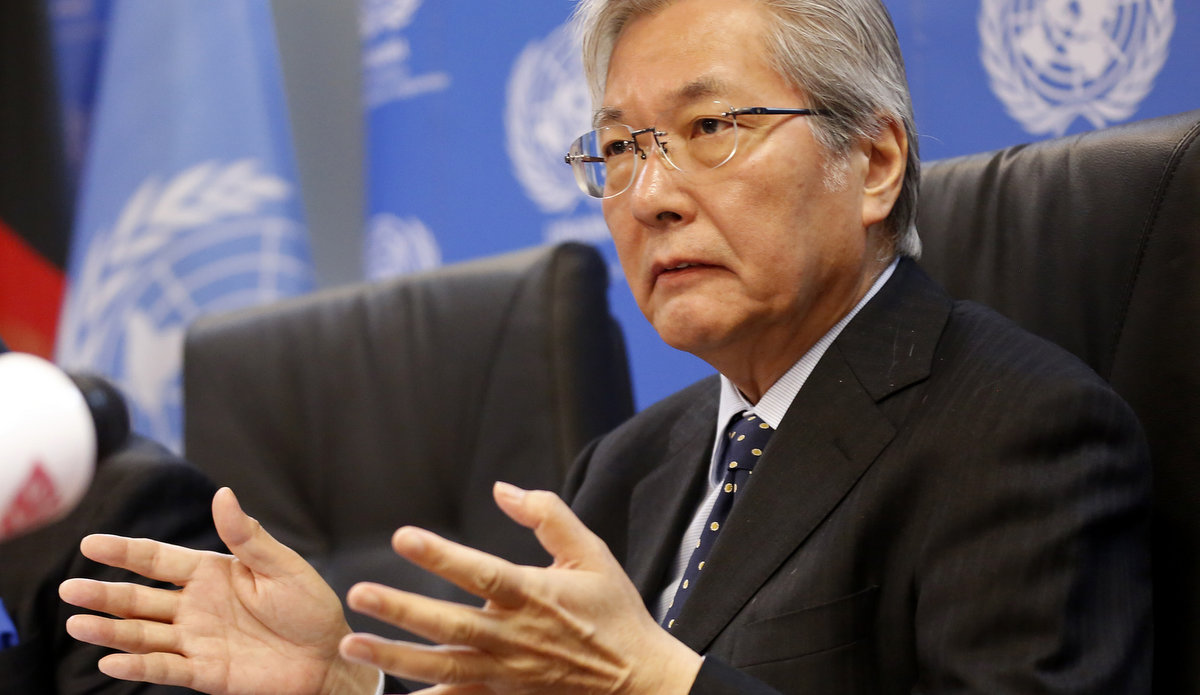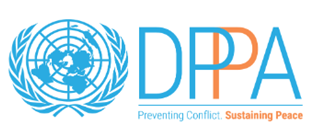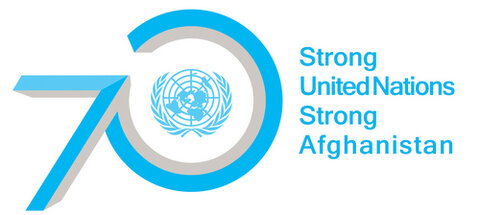SRSG Yamamoto op-ed: A window for peace may be opening in Afghanistan
The Afghan government and the forces of the Taliban have announced that they will each observe a cease-fire over the Muslim Eid holiday this coming weekend. This action is unprecedented in the past 17 years of war.
Both sides are tacitly recognizing the growing popular expressions of frustration with the unending war. Earlier this year Afghans erected “peace tents” near the sites of horrific attacks and have nearly completed a 435-mile march for peace across the country’s arid and war-torn southeast. Given this background, the simultaneous cease-fires could provide an opportunity for the main protagonists of this conflict to begin seeking a negotiated solution to their differences.
After several years of trying to support peace as the U.N. secretary general’s special representative for Afghanistan, I strongly believe that the elements of a potential deal are now discernible through the haze and dust of war. Both sides want an Islamic government. Both agree that the state should be governed by a constitution. Both agree that Afghanistan should neither be a haven for global terrorists nor a threat to its neighbors.
Cessations of hostilities — even if temporary — are the initial building blocks of peace. Having signaled a willingness to set aside arms, Taliban leaders have made a move, albeit undeclared, toward defining their political interests in a future Afghanistan. At the same time, the government must consider creating a new and inclusive national environment to incorporate the Taliban, thus opening a window for the group’s eventual entry into the realm of national politics.
Sticky questions of recognition cannot be dismissed. Members of the Taliban do not see the Afghan government as legitimate. They view it instead as beholden to the international community that helped to shape it at the Bonn Conference in 2001 and continues to support it. The Taliban insists on speaking directly to the United States, which it says is still calling the shots in Afghanistan. The current national unity government in Kabul, for its part, has sought to prevent any engagement with the Taliban that would appear to justify the militant movement’s claim to be an “emirate,” that is, a government. Because of this impasse, most contacts with the Taliban, including those made by foreign diplomats, have remained hidden from the public eye rather than becoming part of a normal and structured peace process.
The Taliban is careful to not call its three-day cease-fire a response to the government’s cease-fire. Yet the simultaneous halt of fighting could begin to move us beyond the challenges of recognition. It demonstrates that the two parties can reach a tacit accommodation that has practical consequences while leaving aside for now the question of the other side’s status. Apart from giving Afghanistan’s citizens a momentary reprieve from violence, the cease-fires also can serve as a test of each side’s unity of command — which both parties have cited as an obstacle to peace negotiations.
The challenge is to build on this step. The international community can urge both sides to extend their cease-fires and engage with each other on starting a more formal process. This would consist, in mediation terms, of having “talks about talks.” Yet even such an event would be a step forward from the current situation of “contacts about contacts” in which little is achieved and thousands of Afghans, including civilians, continue to die.
In the past year, I have seen encouraging signs of a new momentum for peace. In February, President Ashraf Ghani extended a no-preconditions peace offer to the Taliban. The offer puts forth new, concrete and imaginative possibilities for peace, and asks the Taliban to begin to think about its own role in a future Afghanistan. In addition to offering to discuss concrete issues such as a constitutional review, prisoner releases and reintegration of former combatants, Ghani also stated that Afghanistan’s elected government is ready to talk peace anywhere and anytime — including with the assistance of U.N. offices inside or outside Afghanistan, as needed.
Other propitious signs are the recent steps toward improved relations between Afghanistan and Pakistan. The Afghanistan-Pakistan Action Plan for Peace and Solidarity (APAPPS), a recent agreement to put relations back on a constructive track, along with high-level exchanges of top security officials, presents a new dynamic. The government’s current cease-fire and the Taliban’s pending equivalent have been supported by the Pakistani government. The dialogue between the two countries is now more about finding mutual solutions to the issues affecting their bilateral relations rather than dwelling on differences. It is my hope that these bilateral efforts will provide a conducive environment for domestic peace efforts.
These next cautious moves toward peace represent an opportunity that should not be missed. It is my hope that every day without fighting will convince all sides that the conflict is futile. The beginning of a real dialogue about a political settlement will demonstrate that a peace process is a far better vehicle for all combatants to achieve their fundamental political interests than a war that has become a habit, leaving only ruins in its wake.
How this should end is more obvious to me than ever: The only true victory for the Afghan public, which is tired and despairing of the horrors of war, is an end to the fighting and a negotiated peace settlement.
Tadamichi Yamamoto is the UN Secretary-General’s Special Representative for Afghanistan and head of the UN Assistance Mission in Afghanistan.
---
This op-ed appeared in The Washington Post's Global Opinions section: A window for peace may be opening in Afghanistan.
 UN
UN







